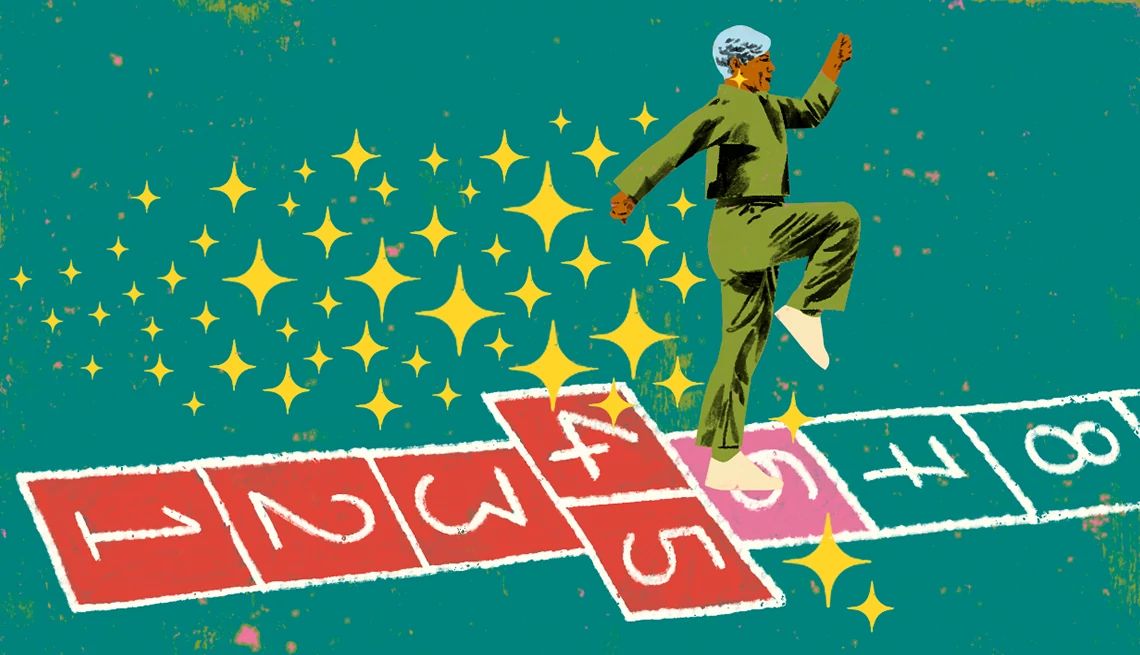AARP Hearing Center


Alyssa Katz started doing stand-up comedy three years ago at the age 60. “It’s never too late,” says the retired lawyer who passed the California bar in 1987, the Quebec bar in ‘95, and the New York bar this April. “I liked studying for the bar, I like law, but I like this a lot,” she says of her comedy work. “Most of my comedy comes from processing the world at my age,” she says. “I think everyone should incorporate joy and laughter in their life.”
After age 50, it may sometimes feel we are tasked with shedding the unnecessary. We declutter and clear up space, both in our homes and our relationships. But being 50+ doesn't mean our lives shouldn't be richer and full of more good things, from healthier living to better sex. Acknowledging and understanding what we need more of can help as we become grayer and shorter; and perhaps, like Katz, it can even help us laugh about it. Here are ten things that will help you plan better —both in body and mind — for your future.
1. More humor
Along with friendship and a life mission, laughter is one of the things we need more of, especially those over 50, says Jane Prellinger, director of the Center for Existential Studies and Psychotherapy in Washington, D.C. Research shows that laughter boosts the level of oxygen in the blood and releases cortisol and endorphins, naturally decreasing anxiety and depression. The dopamine hit from laughing makes it harder to feel stress. And, if that weren’t enough, laughter exercises the diaphragm which is helpful especially for those who have chronic lung issues. “Humor helps everything,” Prellinger says.
How to laugh more:
Consider a “laugh class” or “laugh yoga.” Or, since we laugh more when other people are around – 30 times more, according to research– spend more time with friends; watch a funny movie together or go to a comedy club.
2. More platonic love
Friends are an elixir for our overall health while “social isolation is absolutely a killer,” says Cari Levy, professor of Medicine-Geriatrics at the University of Colorado Anschutz Medical Campus. For many, however, making and keeping friends after 50 can be tough. It needs to be “an act of will,” Prellinger says.
Older adults who spend time with friends have a reduced risk of early death, are more physically active, have more “positive emotions, life satisfaction, optimism, purpose in life, and sense of mastery and reduced risk of things like depression,” says Eric S. Kim, assistant professor of psychology at the University of British Columbia. For those socially active in their 50s and 60s, research also predicts a lower risk of dementia later in life. And, according to the Harvard Happiness Study, for men, ‘social fitness’ is the number one key to a happy life.
But finding and building new friendships isn't always easy for introverts or those who don't want to leave their comfort zone. Michael Uyvari, 75, says his tendency is to go it alone — he says he's picky about the people with whom he socializes. While he’s incredibly active – on skis all winter and, hiking the mountains near his home in Summit County, Colorado in the summer — he’s come up with some workarounds. Rather than carpooling to a group activity, he drives himself so he can leave when he wants.
How to find more platonic love:
Look for like-minded people. When Chip Babbitt, 75, moved to Summit County from Vermont, he joined hiking and biking groups and “very quickly developed many more social contacts and engaged in many more social activities than I ever had in my life prior,” he says. It’s how he met Uyvari, now one of his closest friends — they both just kept showing up to the same activities, Babbitt says. Other ways to develop friendships include volunteering, reaching out to old friends or trying a friendship app such as Bumble BFF, Meetup and Friended.





































































More From AARP
25 Great Ways to Make Friends Over 50
Our guide to expanding your social circle and feeling less alone
25 Great Superfoods for Longevity
Delicious foods tied to lower risk of disease and death
25 Ways to Find a Greater Sense of Purpose
Use our topical advice to elevate your curiosity, plan your third act and expand your horizons